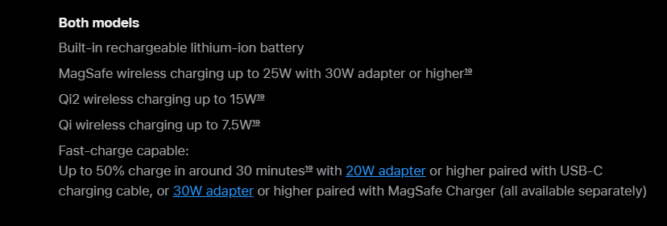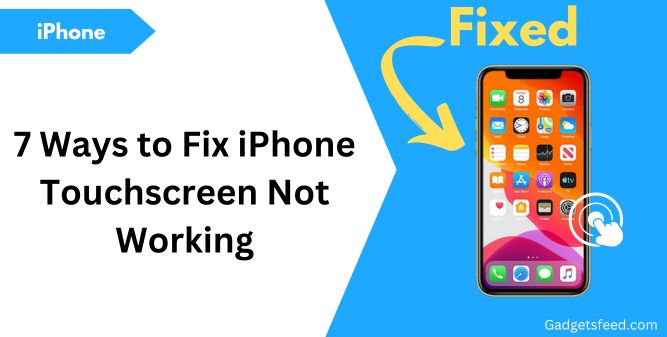If your iPhone’s touchscreen suddenly stopped working after a recent iOS 18 update, you’re not alone.
Many users, from those with the latest iPhone 16 to older models like the iPhone 14, are reporting similar issues, including unresponsive taps, freezing screens, and difficulty swiping.
One User on Reddit wrote:
“Since updating my 13 pro I have had moments of a frozen screen, no responsive to any taps or sideswipes, but swiping to home is still functional,”.
It’s a common bug with major iOS updates, and while it can be alarming, the good news is that most of the time, it’s fixable without a trip to the Apple Store.
In this guide, I will walk you through 7 simple fixes that could get your touchscreen working smoothly again.
Whether the issue is software-related or potentially linked to a bug, these steps should help you get back to using your phone without a hitch.
Before I show you the solutions, it’s also important to understand the causes behind this issue.
This background will help you diagnose and resolve the problem more effectively.
Causes of iPhone Touch Screen Not Working
These are some common causes for an iPhone touchscreen not working:
Software Update: Sometimes, after a software update, bugs or glitches can affect your touch screen’s functionality.
Charging or Accessory Issue: Connecting your iPhone to a charger or accessory can sometimes cause touchscreen issues due to faulty or incompatible accessories, damaged ports, or power surges.
Apple recommends:

- Certified Accessories: Ensure third-party chargers are MFi-certified and Qi-compatible.
- Apple Chargers: Use the 20W or 30W USB-C power adapters.
- MagSafe: Opt for the MagSafe or MagSafe Duo Charger for wireless charging.
Screen Protector or Case Issue: A screen protector or case that’s too thick, misaligned, or damaged can affect the sensitivity and accuracy of your iPhone 16’s touchscreen. Given the iPhone 16’s thin bezel, it’s crucial to choose a well-fitted screen protector to avoid interfering with touchscreen functionality.
Hardware Damage: One of the most serious reasons for a non-responsive touchscreen is hardware damage. This can occur from a drop, impact, bend, or liquid spill, which might crack the screen, damage the digitizer, or short-circuit the motherboard. Such damage can lead to a completely unresponsive touchscreen.
Software issues can often be fixed without needing to visit the Apple Genius Bar, but if it’s hardware-related, You will likely need to visit the store for a proper diagnosis.
Let’s start with some step-by-step troubleshooting to help resolve the issue just be sure to follow the steps in order!
Step 1: Force Restart iPhone
If you haven’t tried a force restart yet, make sure to do so before exploring other solutions.
A force restart can help resolve temporary glitches or issues with your device.
Here is how to do it:

- Press and quickly release the volume up button.
- Press and quickly release the volume down button.
- Press and hold the side button.
- When the Apple logo appears, release the side button.
After force restarting your iPhone, check if the touchscreen is working again as mostly small software glitches are solved with this if not follow the next step.
Step 2: Disconnect Charger
If you are using a third-party charger and the touchscreen issue occurs while it’s plugged in, the charger may be causing a compatibility issue.
Check if the charger is MFi-certified and Qi-compatible.
Try removing the charger, and if the screen starts working fine, you’ll need to switch to an Apple-compatible charger.
Step 3: Reset All Settings
Resetting all settings on your iPhone can help resolve touchscreen issues. This will restore your settings to their factory defaults, which may fix any software glitches affecting the touchscreen.
Here’s how to reset all settings:
1) Open the Settings app then Go to General.


2) Scroll down and tap Transfer or Reset iPhone then Tap Reset, select Reset All Settings.


This action will reset all settings, including Wi-Fi passwords, Bluetooth connections, and wallpaper. While it’s a bit inconvenient, it’s a valuable step to try before considering more complex solutions.
Note: Reset all settings will not delete your data
Step 4: Check for any recent Updates from Apple

Some users have reported that the iOS 18.1 beta has resolved issues with their touchscreen not working properly.
It’s worth checking if there’s a new update available for your device, as it might include fixes that address the touchscreen problem. To check, go to Settings > General > Software Update and see if an update is available.
Step 5: Remove Screen Protector
If you have a screen protector on your iPhone, it might not be applied correctly. Try removing it to see if that improves the touchscreen responsiveness. If the screen protector is properly applied and the issue seems related to a software update, you can skip this step
Now we’re moving on to some advanced troubleshooting steps, especially if the previous ones didn’t fix your issue.
If you have a Mac, you will have to follow Step 5. For windows laptop you can follow Step 6.
Step 6: Backup Your iPhone to MacBook and Restore to Fix Touch Screen Issues
Backing up your iPhone to your MacBook or iMac can be a helpful step in resolving touchscreen issues, especially if a reset is needed.
To start, open Finder and connect your iPhone using a USB cable. Your device should appear under Locations. If it doesn’t show up, click the down arrow to refresh the list.

Once your iPhone is recognized, click on it. In the window that opens, select the option to back up all data on your iPhone to this Mac.

Make sure to check the box for encrypted backups to protect your passwords and sensitive information. Then, click the Backup button to start the process. You may need to enter your device passcode to trust the computer.
The backup may take a bit of time, depending on how much data is on your iPhone, so be patient while the progress bar updates.
Once the backup is complete, the status will show gray and white bars, indicating it’s done.
Now, disconnect your iPhone from your MacBook/iMac. On your iPhone, go to Settings > General > Transfer or Reset iPhone, then tap on Erase All Content and Settings.



Note: If you have an eSIM, you can choose to erase it or keep it. If you erase your eSIM, you’ll need to contact your carrier to reactivate your cellular plan.
Once it’s done again connect your iPhone to your Macbook where you have a backup and restore the backup.

Hopefully, the touchscreen issue will be resolved.
Step 7: Backup Your iPhone to your PC Using iTunes and Restore It
To back up your iPhone to a PC, you will need your device’s data transfer cable and iTunes. Here’s a quick guide to get you started:
1) Install iTunes: Open the Microsoft Store on your PC, search for iTunes, and install it. Once installed, launch iTunes and sign in with your Apple ID.

2) Connect Your iPhone: Plug your iPhone into your PC using the USB cable. If this is your first time connecting, your iPhone will ask if you trust this computer. Tap “Trust” and enter your passcode.

3) Set Up Backup: In iTunes, you’ll see a summary screen for your iPhone. To back up your device, choose “This Computer” under backup options. For added security, you can select the “Encrypt iPhone backup” option and set a password. Otherwise, click “Back Up Now” to start the backup process.

Note: If you choose to encrypt your backup with a password, make sure to remember it. You’ll need this password to restore the encrypted backup later.
4) Erase All Content: After the backup is complete, disconnect your iPhone from your PC. On your iPhone, go to Settings → General → Transfer or Reset iPhone → Erase All Content and Settings.
Note: If you have an eSIM, you can choose to erase your eSIM or keep it. If you erase it, you’ll need to contact your carrier to reactivate your cellular plan.



5) Restore from Backup: After resetting your iPhone, reconnect it to your PC. Open iTunes and select “Restore Backup.” Pick the backup you want to use and click “Restore.”

These steps should help resolve your iPhone’s touchscreen issues if they were caused by software glitches.
What if the issue is still not Resolved?
I’m confident these steps will resolve the issue if it’s software-related. However, if you’ve tried everything and the touchscreen is still unresponsive,
I recommend visiting the Apple Store for further assistance, as the problem might be hardware-related, or maybe they are aware of the issue and can get it fixed in the next software update they will guide you much better regarding that.
Wrapping up
Software glitches can sometimes be so frustrating that they make your iPhone screen unusable.
The steps I have shared should help if the issue is due to minor software problems or corrupt system files.
If the problem persists beyond that, waiting for the next Apple update might be your best bet.
However, if you suspect a hardware issue, a visit to the Apple Store can provide clarity and help you pinpoint the exact cause of your touchscreen not working issue.

Hi, I’m Michael Davis, the owner and writer of GadgetsFeed.com. This website is where I share my knowledge and passion for tech, laptops, and computers. I’m a software engineer by profession, and I enjoy testing and reviewing various gadgets and technologies. I started GadgetsFeed.com to help others find easy solutions for their laptop, computer, and tech problems.
